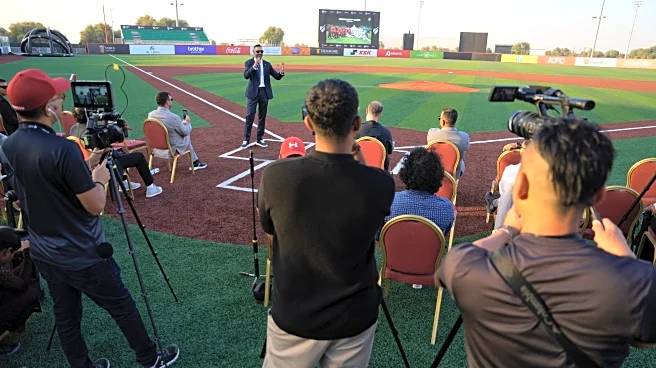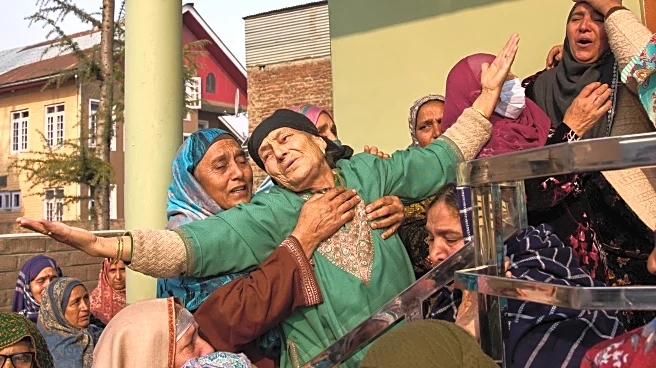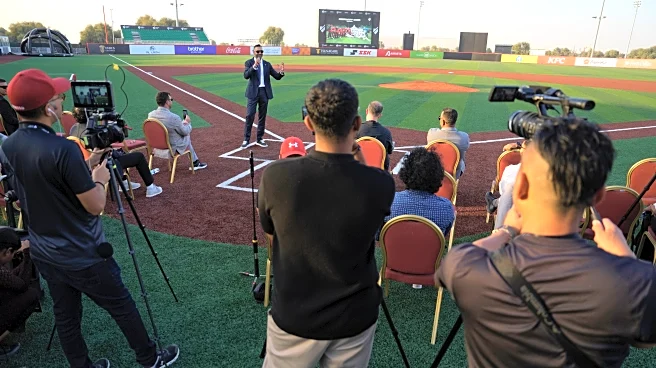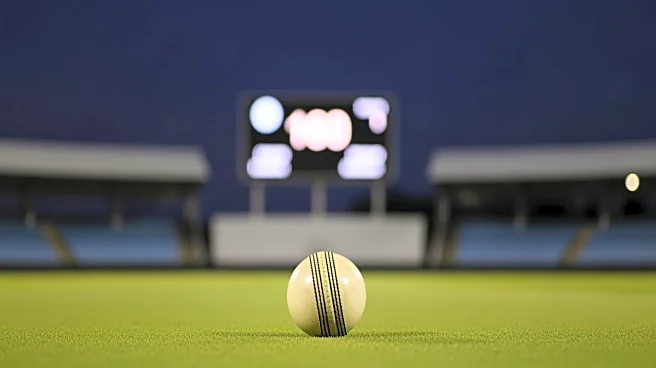What's Happening?
Talha Anjum, a popular Pakistani rapper, sparked controversy by waving an Indian flag during a concert in Nepal. Despite his music being blocked in India, Anjum accepted the flag from a fan and draped
it around his shoulders, leading to backlash from Pakistani social media users. In response, Anjum defended his actions, stating that his art transcends borders and he would repeat the gesture despite criticism. The incident highlights Anjum's bold personality and his commitment to artistic expression beyond political divides.
Why It's Important?
Anjum's actions and subsequent defense underscore the complex relationship between art and politics in South Asia. His stance challenges traditional nationalistic boundaries, advocating for a borderless approach to artistic expression. The controversy reflects broader tensions between India and Pakistan, where cultural exchanges are often fraught with political implications. Anjum's actions may influence other artists in the region to reconsider the role of art in bridging divides, potentially fostering dialogue and understanding through cultural expression.
What's Next?
The incident may prompt discussions within the South Asian music industry about the role of artists in political discourse. Anjum's actions could inspire other artists to engage in similar gestures, potentially leading to increased cultural exchanges between India and Pakistan. However, it may also provoke backlash from nationalist groups, influencing how artists navigate political sensitivities. The response from fans and critics alike will likely shape future interactions between artists and their audiences in politically charged environments.
Beyond the Headlines
Anjum's gesture raises questions about the power of art to transcend political boundaries and the potential for cultural diplomacy in easing regional tensions. It highlights the role of artists as cultural ambassadors and the impact of their actions on public perception. The incident may contribute to ongoing debates about the intersection of art, politics, and identity in South Asia, influencing how cultural expressions are perceived and valued in the region.













